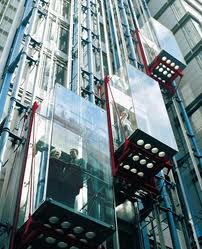The construction of multi-storey buildings is actively developing, and with this comes the need for reliable and comfortable elevator systems. A properly installed and adjusted elevator provides residents with convenience in moving between floors and effective transportation of goods.
Classification of elevators
 Passenger elevators are the most common type of elevators. Their speed generally ranges from 45 to 105 meters per minute, and their load capacity varies from 450 to 1350 kg, corresponding to six to twenty passengers. There are also freight elevators with similar speed but higher load capacity - from 600 to 2500 kg.
Passenger elevators are the most common type of elevators. Their speed generally ranges from 45 to 105 meters per minute, and their load capacity varies from 450 to 1350 kg, corresponding to six to twenty passengers. There are also freight elevators with similar speed but higher load capacity - from 600 to 2500 kg.
Additionally, there are special lifts for transporting cars, commonly used in multi-level parking, as well as escalators that operate in supermarkets, train stations, subways, and airports. Using similar technologies, lifting gates and doors also function.
The arrangement of elevator drives
The most common type of elevator drive is traction. In this case, the cabin is raised and lowered using cables that wind or unwind from a special drum. Another type of transmission is hydraulic, where movement is performed by a plunger activated by a hydraulic cylinder placed in a pipe.
In all types of elevators, asynchronous electric motors are used, chosen for their advantages, such as the ability for smooth speed regulation, which allows saving energy when changing loads.
The principle of operation of frequency converters
A frequency converter is an electronic device for regulating the output voltage frequency. One input receives the base voltage of a standard power grid, while the other receives the control voltage. The frequency converter circuit includes a rectifier and an inverter. The rectifier converts alternating current to direct current, and then the inverter converts it back to alternating current with a specified frequency that can be adjusted.
The inverter is based on thyristors or bipolar transistors, which provide operational efficiency with high efficiency across a wide range of currents and voltages.
Main requirements for frequency converters
When selecting a frequency converter for an elevator, it is important to pay attention to several key characteristics:
- The power of the converter must match the rated power of the electric motor.
- The type of power supply voltage: preferably three-phase with a voltage of 380 V, but single-phase 220-240 V can also be used.
- Speed control range: most converters operate when reducing speed to 10% of the rated value.
- Availability of a regeneration mode, which allows energy to be returned to the grid.
The application of frequency converters in elevators improves their efficiency, reduces energy consumption, and also lowers maintenance costs. More information can be obtained by contacting our specialists in the Contacts section.